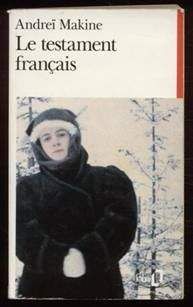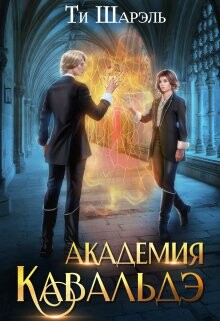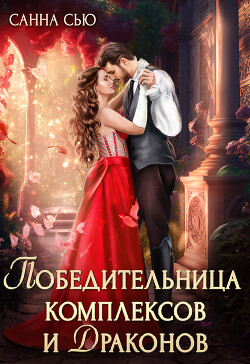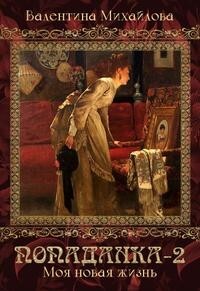Моника Блэк - Смерть в Берлине. От Веймарской республики до разделенной Германии
Помощь проекту
Смерть в Берлине. От Веймарской республики до разделенной Германии читать книгу онлайн
202
См.: Linse U. Barfüßige Propheten: Erlöser der zwanziger Jahren. Berlin: Siedler Verlag, 1983.
203
См.: Behrenbeck S. Der Kult um die toten Helden. S. 149 – 150.
204
Kollwitz K. The Diary and Letters of Käthe Kollwitz. P. 66. Запись от декабря 1915 г.
205
Ibid. Запись от 13 окт. 1916 г.
206
См.: Hagemann K. German Heroes: The Cult of Death for the Fatherland in Nineteenth-Century Germany // Masculinities in Politics and War: Gendering Modern History / Eds. S. Dudink, K. Hagemann, J. Tosh. Manchester: Manchester University Press, 2004. P. 116 – 136.
207
Мое обсуждение сказанного Деном в Магдебурге в 1928 г. и последующих выступлений против него основано главным образом на биографических сведениях, приведенных о Дене в: Biographisch-bibliographisches Kirchenlexikon. Band 1 / Hgg. F.W. Bautz, T. Bautz. Hamm [в списке литературы – Nordhausen!]: Verlag Traugott Bautz, 1990. S. 1242 – 1248.
208
Dehn G. Die alte Zeit, die vorigen Jahre. Münich: Chr. Kaiser Verlag, 1962. S. 251. Документы, относящиеся к тому конфликту, см. в: Dehn G. Kirche und Völkerversöhnung: Dokumente zum Halleschen Universitätskonflikt. Berlin: Furche Verlag, n.d.
209
См.: Reichel P. Helden und Opfer zwischen Pietät und Politik: Die Toten der Kriege und der Gewaltherrschaft in Deutschland im 20. Jahrhundert // Der Krieg in der Nachkriegszeit: Der Zweite Weltkrieg in Politik und Gesellschaft der Bundesrepublik / Hgg. M.Th. Greven, O. von Wrochem. Opladen: Leske & Budrich, 2000. S. 172.
210
См.: Whalen R.W. Bitter Wounds: German Victims of the Great War, 1914 – 1939. Ithaca, NY: Cornell University Press, 1984. P. 33.
211
См.: Hausen K. The «Day of National Mourning» in Germany // Between History and Histories: The Making of Silences and Commemorations / Eds. G. Sider, G. Smith. Toronto: University of Toronto Press, 1997. P. 134 – 135.
212
Ibid. P. 138.
213
Мое рассмотрение мемориального проекта Нойе-Вахе основано на статье: Forner S.A. War Commemoration.
214
См.: Ibid. P. 545, n. 113.
215
Ibid. P. 537; 537, n. 87.
216
См.: Ibid. P. 536; 545.
217
Latzel K. Vom Sterben im Krieg. S. 70.
218
См.: Ibid. S. 71.
219
См.: Flex W. Der Wanderer zwischen beiden Welten. Münich: C. H. Beck’sche Verlagsbuchhandlung, 1917.
220
Latzel K. Vom Sterben im Krieg. S. 82.
221
Forner S.A. War Commemoration. P. 545, n. 113.
222
См.: Ibid. P. 523.
223
См.: Koselleck R. Kriegerdenkmale als Identitätsstiftungen der Überlebenden // Identität / Hgg. O. Marquard, K. Stierle. Münich: Wilhelm Fink, 1979. S. 272.
224
Forner S.A. War Commemoration. P. 532.
225
Whalen R.W. Bitter Wounds. P. 183.
226
См.: Behrenbeck S. Der Kult um die toten Helden. S. 155.
227
Geyer M. Insurrectionary Warfare: The German Debate about a Levée en Masse in October 1918 // Journal of Modern History. 2001. № 73. P. 509.
228
См.: Fischer N. Die Geschichte des Todes in der Neuzeit. Erfurt: Sutton Verlag, 2001. P. 71.
229
Kollwitz K. Diary and Letters of Käthe Kollwitz. P. 76 (запись от 13 окт. 1916 г.).
230
См.: Ibid. P. 108 (июнь 1924 г.).
231
Behrenbeck S. Der Kult um die toten Helden. S. 156 – 158.
232
См.: Winter J. Sites of Memory, Sites of Mourning: The Great War in European Cultural History. Cambridge: Cambridge University Press, 1998.
233
Latzel K. Vom Sterben im Krieg. S. 71.
234
Я имею в виду такие новаторские работы по истории Европы раннего Нового времени, как: Behringer W. The Shaman of Oberstdorf: Chonrad Stoeckhlin and the Phantoms of the Night. Charlottesville: University of Virginia Press, 1998; Darnton R. The Great Cat Massacre and Other Episodes in French Cultural History. N.Y.: Vintage, 1985; Sabean D. Power in the Blood: Popular Culture and Village Discourse in Early Modern Germany. Cambridge: Cambridge University Press, 1984; Davis N.Z. The Return of Martin Guerre. Cambridge (MA): Harvard University Press, 1983; Ginzburg C. The Cheese and the Worms. Есть прекрасные изложения истории слухов и легенд в Европе XX в., но они встречаются гораздо реже. Прекрасный пример – кн.: Horne J., Kramer A. German Atrocities 1914: A History of Denial. New Haven (CT): Yale University Press, 2001; а также статья: Grant B. An Average Azeri Village (1930): Remembering Rebellion in the Caucasus // Slavic Review. 2004. № 63:4. P. 705 – 731.
235
См.: Atlas der deutschen Volkskunde. Neue Folge. Band II. Marburg: N.G. Elwert Verlag, 1966 – 1982. S. 432.
236
См.: Derwein H. Geschichte des christlichen Friedhofs in Deutschland. S. 155 – 156.
237
Цит. по: Berger P. Religiöses Brauchtum im Umkreis der Sterbeliturgie in Deutschland. Münster: Verlag Regensburg, 1966. S. 21.
238
Clemen C. Das Leben nach dem Tode im Glauben der Menschheit. Leipzig: B.G. Teubner, 1920. S. 4.
239
См.: Münkler H., Storch W. Siegfrieden: Politik mit einem deutschen Mythos. Berlin: Rotbuch Verlag, 1988. S. 87.
240
См.: Behrenbeck S. Der Kult um die toten Helden. S. 155.
241
См.: Stern J.P. A Society Longing for Transcendence // Stern J.P. Hitler: The Führer and the People. Berkeley: University of California Press, 1975. P. 76 – 82.
242
Baird J.W. To Die for Germany. P. 45.
243
Так описываются похороны Хорста Весселя в ст.: Baird J.W. Goebbels, Horst Wessel, and the Myth of Resurrection and Return // Journal of Contemporary History. 1982. № 17:4. P. 633 – 650.
244
Цит. по: Ibid. Р. 640 – 641.
245
См.: Wette W. Ideologen, Propaganda und Innenpolitik als Voraussetzungen der Kriegspolitik des Dritten Reiches // Ursachen und Voraussetzungen der deutschen Kriegspolitik / Hgg. W. Diest, M. Messerschmidt et al. Stuttgart: Deutsche Verlags-Anstalt, 1979. S. 94 – 99.
246
Hausen K. The «Day of National Mourning» in Germany. P. 138.
247
Whalen R.W. Bitter Wounds. P. 185.
248
Beitl R. Deutsches Volkstum der Gegenwart. S. 43.
249
См.: Lixfeld H. Folklore and Fascism: The Reich Institute for German Volkskunde. Bloomington: Indiana University Press, 1994. P. 46.
250
Koonz C. The Nazi Conscience. P. 193.
251
См.: Confino A. Fantasies about the Jews: Cultural Reflections on the Holocaust // History and Memory. 2005. № 17:1/2. P. 296 – 322, особ. 309 – 315; Smith H.W. The Butcher’s Tale: Murder and Anti-Semitism in a German Town. N.Y.: Norton, 2002.
252
См.: Merridale C. Night of Stone: Death and Memory in Twentieth-Century Russia. N.Y.: Viking, 2000. P. 86; Tumarkin N. Lenin Lives!: The Lenin Cult in Soviet Russia. Cambridge (MA): Harvard University Press, 1997.
253
См.: Gentile E. The Sacralization of Politics in Fascist Italy. Cambridge (MA): Harvard University Press, 1996. P. 160.
254
См.: Mussolini B. My Autobiography. L.: Hutchinson, n.d. P. 119. Цит. по: Neocleous M. Long Live Death! Fascism, Resurrection, and Immortality // Journal of Political Ideologies. 2005. № 10:1. P. 32.
255
См.: Hausen K. The «Day of National Mourning» in Germany. P. 139.
256
См.: Vondung K. Magie und Manipulation: Ideologischer Kult und politische Religion des Nationalsozialismus. Göttingen: Vandenhoeck & Ruprecht, 1971. P. 76.
257
BA R 2/4348. Volksbund Deutsche Kriegsgräberfürsorge, «Arbeitsbericht, 1933/34».
258
См.: Böhme H. Gräber des Krieges // Idem. Rufe in das Reich. Die heldische Dichtung von Langemark bis zur Gegenwart. Berlin: Verlag Junge Generation, 1934. S. 28. Ср.: Des deutschen Dichters Sendung in der Gegenwart / Hg. H. Kindermann. Leipzig: Reclam, 1933. О творчестве ведущих нацистских поэтов см.: Baird J.W. Hitler’s War Poets: Literature and Politics in the Third Reich. Cambridge: Cambridge University Press, 2008.
259
Holzapfel C.M. Das Wunder! // Böhme H. Rufe in das Reich. S. 284.
260
См.: Behrenbeck S. Der Kult um die toten Helden; Baird J.W. To Die for Germany; Latzel K. Vom Sterben im Krieg.
261
Brockmeier W. An die Väter // Böhme H. Rufe in das Reich. S. 265.
262
См.: Neumann B. The National Socialist Politics of Life // New German Critique. 2002. № 85. P. 114.
263
См.: Biale D. Blood and Belief: The Circulation of a Symbol between Jews and Christians. Berkeley: University of California Press, 2007; Bynum C.W. Wonderful Blood: Theology and Practice in Late Medieval Northern Germany and Beyond. Philadelphia: University of Pennsylvania Press, 2007. О крови как древнем символе, получившем новую жизнь в современных расистских философиях, см.: Smith H.W. The Butcher’s Tale.
264
О «космологическом измерении гендера и гендерных аспектах космологии» см.: Delaney C. The Seed and the Soil: Gender and Cosmology in Turkish Village Society. Los Angeles: University of California Press, 1991.
265
Krüger A. 10 Jahre Kampf um Volk und Land. Berlin-Schöneberg: Verlag Deutsche Kultur-Wacht, 1934. S. 6.
266
Wehner J.M. Hymnus an die Erde // Böhme H. Rufe in das Reich. S. 156.
267
Brockmeier W. Unser Glaube // Böhme H. Rufe in das Reich. S. 147.
268
Koenker E. Secular Salvations: The Rites and Symbols of Political Religions. Philadelphia: Fortress Press, 1965. P. 24.
269
Schumann G. Die Lieder vom Reich (part III) // Idem. Die Lieder vom Reich. Münich: Langen/Müller, 1936. S. 16.
270
См.: Ameskamp S. Fanning the Flames. P. 107.
271
См.: Fischer N. Die Technisierung des Todes: Feuerbestattung, Krematorium, Aschenbeisetzung // Idem. Raum für Tote. S. 149.
272
BA R 5101/22292. «Begründung». Июнь 1934 г.
273
Zum Geleit // Die Feuerbestattung. Авг. 1938 г. 10. Jhg., № 4. S. 25.
274
Schreckenbach W., Witzmann C. Die Totenfeier: Eine Sammlung von Gedanken für Reden und Ansprachen, Gedichten und Sprechchören, Deutsche Feiern № 4. Leipzig: Conrad Glaser Verlag, 1935. S. 8 – 9.
275
Ibid. S. 60.
276
См.: Lixfeld H. Fascism and Folklore. P. 128. Используя слова «языческий» и «дохристианский», я отдаю себе отчет в том, насколько проблематичны эти понятия. См.: Jong M. de. Elusive Others: Jews, Heretics, and Pagans // The Early Middle Ages / Ed. R. McKitterick. Oxford: Oxford University Press, 2001. P. 142 – 148.
277
Цит. по: Lixfeld H. Op. cit. P. 133.
